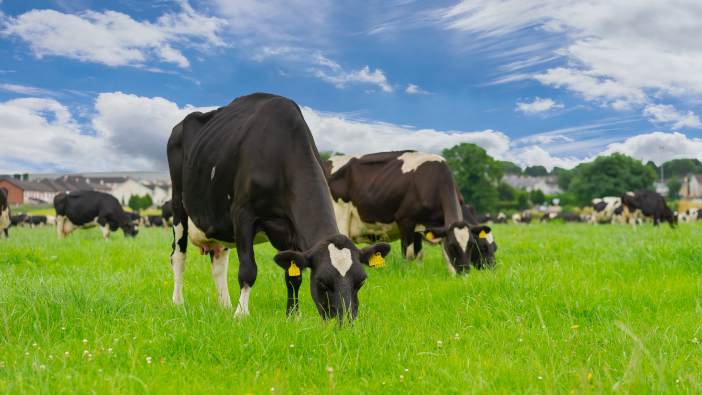Analysis of one of the UK’s largest beef and sheep rearing regions has suggested that converting farms from livestock to arable would lead to regular crop failures.
The Rothamsted Research-led study focused on the southwest of England, working in response to questions over what could happen to livestock farming communities as society shifts towards plant-based diets.
According to the study, the chances of successfully growing winter wheat on fields previously used to raise livestock could be as little as 28%, with increased rainfall making sowing the crop impossible in some years.
Forecasts predict that in the absence of climate change, winter wheat yields could be greater than 14 tonnes per hectare. However, the near-certain impact of increased rainfall on sowing and harvest dates sees this figure drop to as low as three tonnes per hectare.
Lead author Dr Lianhai Wu said: “Adapting to the changing climate and changes in consumer demands will force us to diversify land from its current uses. Livestock grazing is the main type of farming across the west of the British Isles and it has been suggested that grasslands in the region could be converted to other land uses, such as growing cereal crops.
“However, our simulations suggest that, for the southwest of England and regions under a similar combination of soil types and climates, planting winter wheat between October and December would be impossible in some years because of constraints on soil ‘workability’.”
Workability is defined as the ability of the soils to support being ploughed and, along with trafficability, is determined by the weather, soil properties and the previous impact of machinery. On arable land, unsuitable soil conditions during sowing and harvest will decrease yield, and possibly prevent it entirely.
The study, which also involved SRUC, looked at three soil types common across the southwest under the current conditions and using three climate forecasts from the Met Office. Across the different soil types and climate scenarios, the chances of sowing winter wheat between October and December varied from 28% up to 76%. Harvesting was seen to be less impacted by the rainfall.
Climate models suggest that the number of heavy rain days (more than 2cm of rain) will increase from six to as many as 17 each year.
Delays to sowing and failure to harvest a crop in some years due to wet weather made the idea of conversion to arable a “non-starter” for livestock farmers in the southwest, said Dr Wu. “But the question still remains – if we are going to eat less meat and rear less livestock, what happens to these farmers and these farming areas?”
Furthermore, the study looked at the implications for soil carbon storage and greenhouse gas emissions if grassland, cut three times a year, was converted to winter wheat.
Including nitrous oxide and methane, the study showed that while growing ryegrass emitted more greenhouse gases than the same land converted to wheat, this is offset by the greater amount of carbon stored in the ryegrass.
Grasses return more carbon to the soil when they die, meaning carbon stocks would decline annually by between 165kg and 280kg if the ground was converted to winter wheat.
“Grassland conversion in the region would not be sustainable in terms of carbon sequestration although applications of livestock manure or other organic materials could mitigate soil C losses to some extent,” said Dr Wu
“In terms of storing carbon in the soil, converting grassland to winter wheat is therefore unsustainable in areas with soils and climates similar to the southwest of England, such as many other areas in the UK and northern Europe.”


